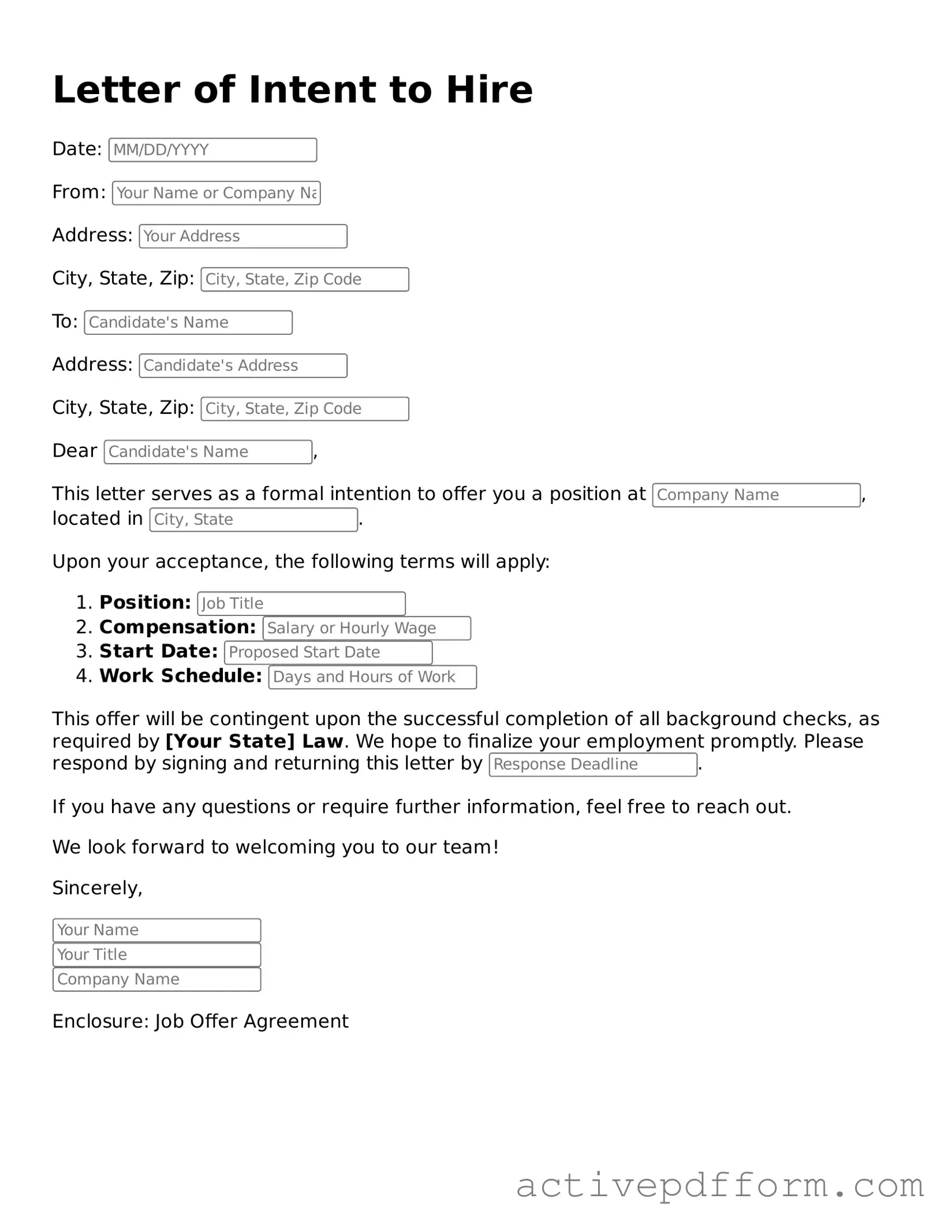What is a Letter of Intent to Hire?
A Letter of Intent to Hire is a document that outlines the intention of an employer to hire a specific candidate. It serves as a preliminary agreement before the formal employment contract is finalized. This letter typically includes details about the job position, salary, and start date.
Why is a Letter of Intent to Hire important?
This letter provides clarity for both the employer and the candidate. It confirms that the employer is interested in hiring the candidate and outlines key terms of employment. This helps manage expectations and reduces misunderstandings before the official contract is signed.
What information is included in a Letter of Intent to Hire?
The letter generally includes the candidate's name, the position being offered, salary details, start date, and any conditions that must be met before employment begins. It may also outline benefits and other relevant employment terms.
Is a Letter of Intent to Hire a binding contract?
No, a Letter of Intent to Hire is not a binding contract. It expresses the intent to hire but does not create legal obligations for either party. The formal employment contract will contain the binding terms of employment.
When should a Letter of Intent to Hire be sent?
This letter should be sent after the candidate has successfully completed the interview process and the employer has decided to move forward with the hiring process. It is typically sent before the formal employment offer is made.
Can a candidate negotiate terms in a Letter of Intent to Hire?
Yes, candidates can negotiate terms outlined in the letter. If there are aspects they wish to change, such as salary or start date, they should communicate these concerns with the employer before signing any documents.
What should a candidate do after receiving a Letter of Intent to Hire?
Upon receiving the letter, the candidate should review it carefully. They should ensure all details are correct and reflect their understanding of the job offer. If everything looks good, they can sign and return it. If there are questions or concerns, they should reach out to the employer for clarification.
Is a Letter of Intent to Hire standard practice?
Yes, many employers use Letters of Intent to Hire as part of their hiring process. It helps establish a clear understanding between both parties and can streamline the transition to a formal employment contract.
What happens if the conditions in the Letter of Intent to Hire are not met?
If the conditions outlined in the letter are not met, the employer may choose not to proceed with the hiring. This could include failing background checks, reference checks, or other pre-employment requirements. The letter serves as a guideline, but it does not guarantee employment.
Can a Letter of Intent to Hire be revoked?
Yes, a Letter of Intent to Hire can be revoked by the employer before a formal employment contract is signed. If circumstances change or if the employer decides not to proceed with hiring, they can withdraw the offer. Candidates should understand that this letter is not a guarantee of employment.
